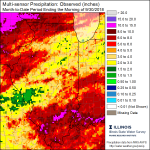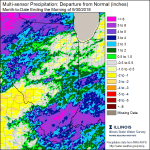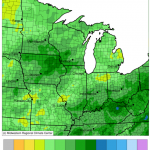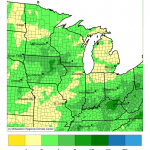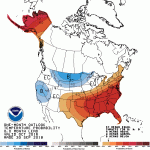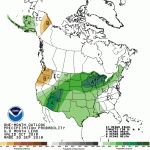Today, NOAA released the official outlook for winter (December-February). Not much to report for Illinois. The northern third of the state has a slightly increased chance of a warmer than normal winter. And northeastern Illinois has a slightly increased chance of a drier than normal winter. However, the increased odds are very weak and we are on the margins for those areas. Historically, the core areas with higher odds on the NOAA maps (for example, the Northwest for temperatures) are more like to be proven correct.
Otherwise, the chances are even-Steven across Illinois for the three categories of above, below, and near-average winter temperatures and precipitation. Maps below.
One of the most important factors for this winter will be the presence and strength of a possible El Niño event. Currently, there is a 70 to 75 percent chance that El Niño will arrive sometime this fall or winter. El Niño occurs over the central and eastern Pacific Ocean and involves changes in the atmosphere and ocean circulation. This, in turn, can affect our winter weather in the US.
Right now the official forecast indicates a weak El Niño, hence the anemic odds over Illinois. If it had been stronger, the odds of a warmer-than-normal winter would be higher for us. A weaker El Niño event could mean that other factors have a chance to play a bigger role in our winter weather. However, things like the Arctic Oscillation and the related Polar Vortex are much harder to predict more than a few days in advance.
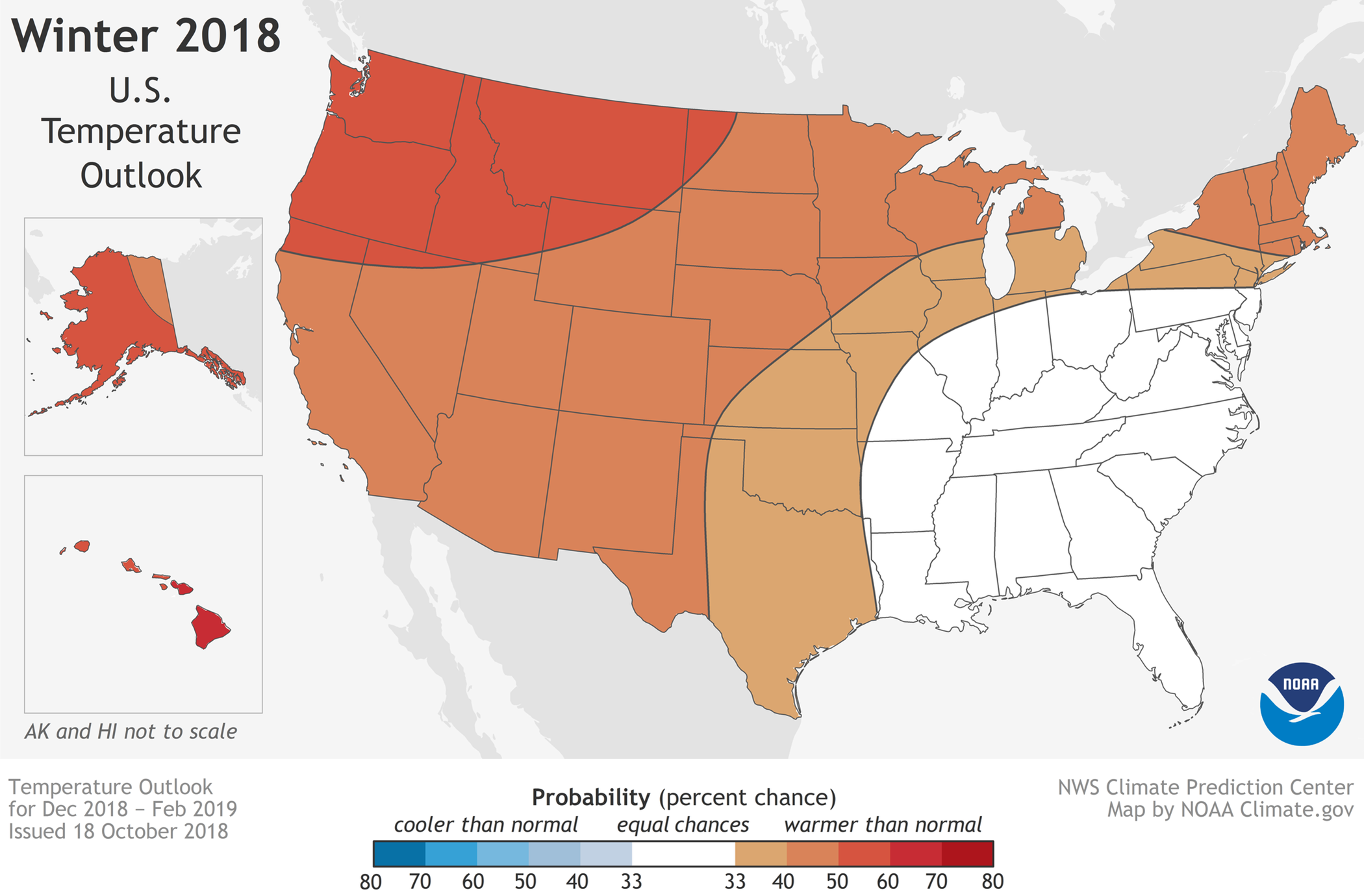
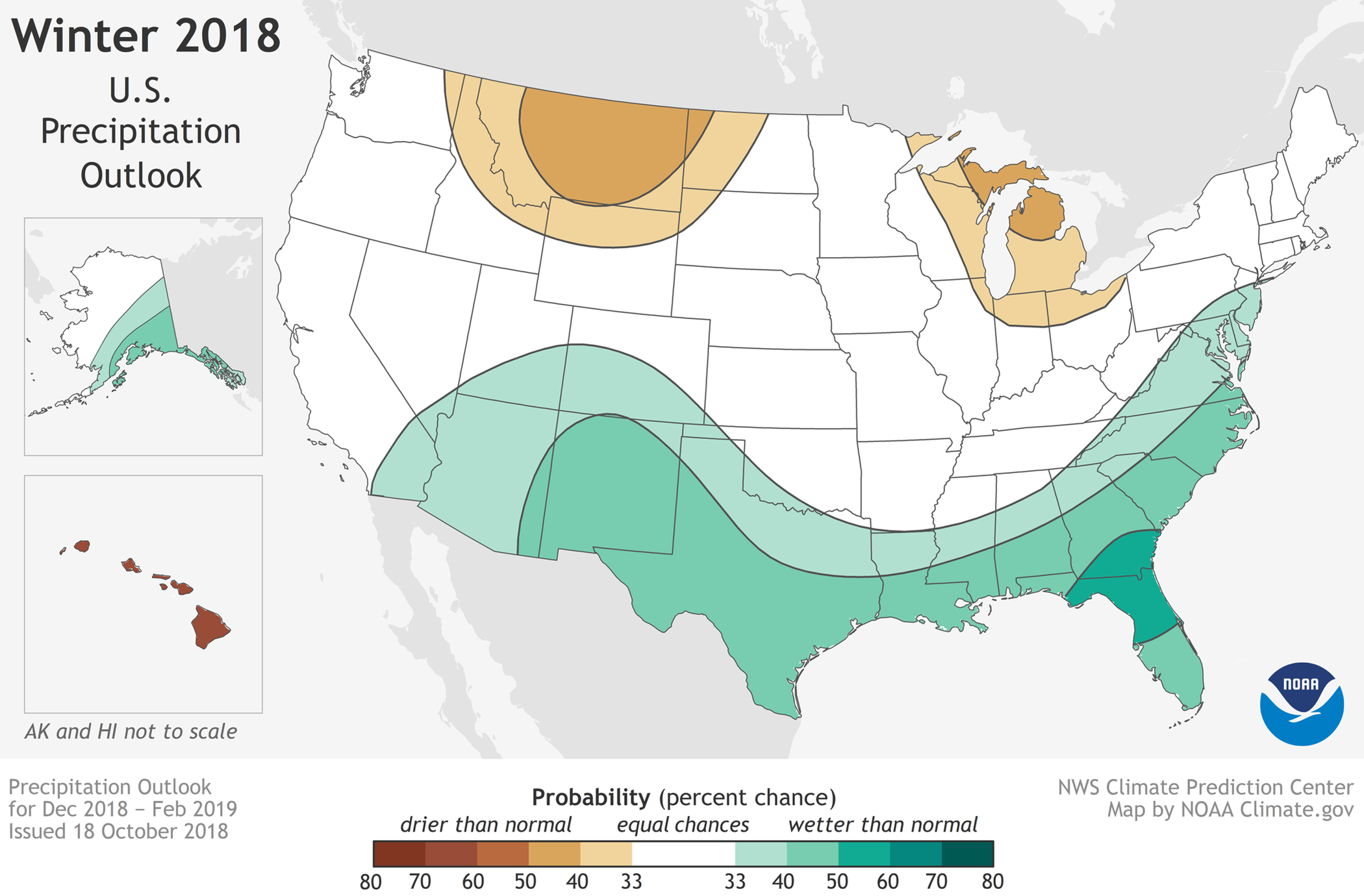
Above-Normal Temperatures and Rainfall for September in Illinois
Based on preliminary data, Illinois experienced above-normal temperatures and rainfall for September in Illinois. Here are the statistics for the state:
- The statewide average temperatures for September was 70.0 degrees, 3.8 degrees above normal and the 12th warmest September on record. We were on track to one of the warmest Septembers on record until the last cold snap.
- The statewide average rainfall for September was 4.97″, 1.74″ above normal and the 19th wettest September on record.
- The hottest temperature recorded for September was 99 degrees at Springfield Airport on September 5.
- The coldest temperature recorded for September was 30 degrees at Ottawa on September 29.
- The highest monthly rainfall total for September was 12.43″ at Clay City (just south of Effingham).
Rainfall
Here are the rainfall totals (left) and departures from normal (right) for September in Illinois (click to enlarge). Rainfall was heaviest in southern Illinois with amounts up to 12 inches and in northwestern and western Illinois with amounts up to 10 inches – all well above normal. There was a band of drier conditions stretching from St. Louis to Chicago where rainfall totals of 1 to 3 inches were common.
In addition, heavy rains fell across the upper Midwest in September (maps below, click to enlarge). The rains were especially heavy in Wisconsin, Iowa, and Minnesota, leading to river flooding in Illinois along the Mississippi and rivers coming out of Wisconsin
Temperatures
Temperatures across the Midwest were much above normal in September (map below with pumpkin spice-colored shading – appropriate for this time of year). While Illinois was 3.8 degrees above normal, Indiana was 4.5 degrees above normal, Kentucky was 5.0 degrees above normal, and Ohio was 5.5 degrees above normal. The other states were 1 to 3 degrees above normal for the month.
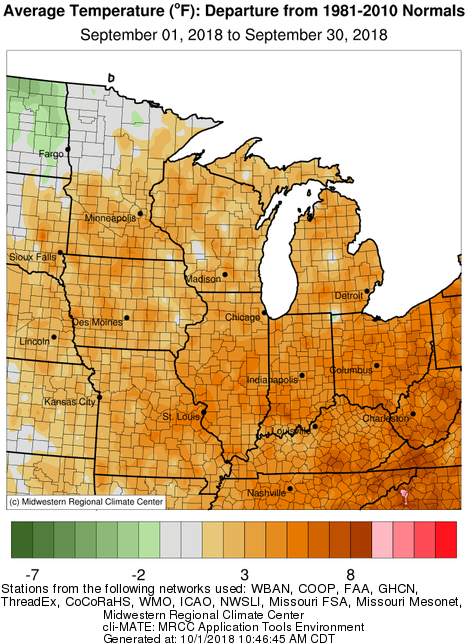
Outlook for October
Finally, here is the outlook for October that was released by the NWS on September 30. These rely heavily on the more reliable forecasts out to 14 days. Those forecasts show Illinois with very strong chances for above-normal temperatures and rainfall. As a result, the October outlook also shows most of Illinois with an increased chance of above-normal temperatures and all of Illinois with an increased chance of above-normal temperatures.
On a side note, the 4-corners region (UT, CO, AZ, and NM) are in a severe drought and the expected rainfall will be welcomed there. The same cannot be said for the Upper Midwest, which was already very wet in September.
See the page on normals for more on this topic.


